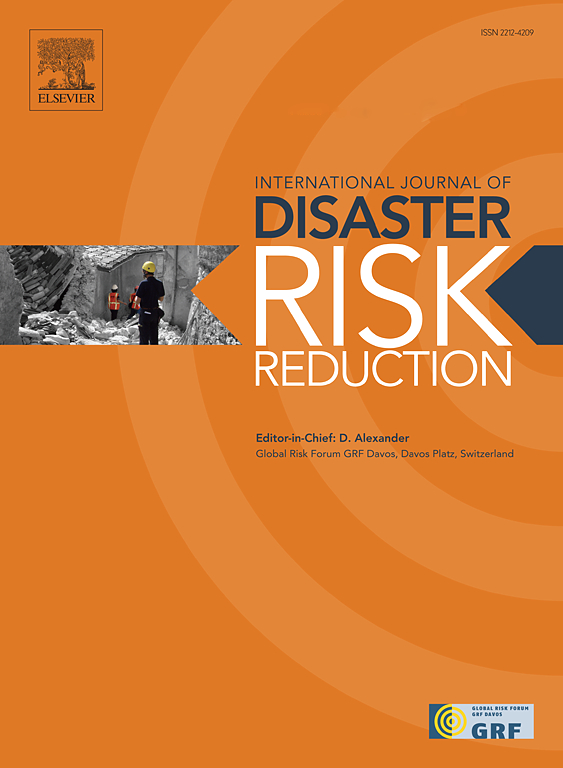Integrated emergency medical supply planning considering multiple supply channels in healthcare coalitions
IF 4.2
1区 地球科学
Q1 GEOSCIENCES, MULTIDISCIPLINARY
International journal of disaster risk reduction
Pub Date : 2024-09-23
DOI:10.1016/j.ijdrr.2024.104823
引用次数: 0
Abstract
Emergency medical supplies are crucial for the successful disaster response of healthcare coalitions. In practice, a healthcare coalition can obtain emergency medical supplies from three channels, i.e., supply pre-positioning, contracted reserve and emergency procurement, which, however, are not planned integrally in the literature. To fill the research gap, this study proposes a two-stage stochastic programming model for integrated emergency medical supply planning considering multiple supply channels in healthcare coalitions. In the first stage before disasters, decisions on emergency medical supply pre-positioning and signing of two types of medical supply procurement contracts are determined. In the second stage after disasters, decisions of emergency supply procurement, contract implementation, and supply transshipment are optimized based on the first-stage decisions and the realized uncertain disaster impacts. To show the effectiveness of our model and obtain managerial insight, we develop four comparison models and conduct a case study on the healthcare coalition of West China Hospital in China. This study highlights the great benefits of supplementing the pre-positioning of emergency medical supplies with multi-type contracted reserve in healthcare coalitions and emphasizes the importance of strengthening cooperation with suppliers and encouraging all member hospitals to implement the contracted reserve.
考虑医疗联盟中多种供应渠道的综合紧急医疗供应规划
紧急医疗物资是医疗联盟成功应对灾难的关键。在实践中,医疗联盟可以从三个渠道获得紧急医疗物资,即物资预置、合同储备和紧急采购。为了填补这一研究空白,本研究提出了一个考虑到医疗联盟多种供应渠道的两阶段随机规划模型,用于综合应急医疗供应规划。在灾害发生前的第一阶段,确定紧急医疗供应预置和签订两种医疗供应采购合同的决策。在灾后的第二阶段,根据第一阶段的决策和已实现的不确定灾害影响,优化应急供应采购、合同执行和供应转运的决策。为了展示模型的有效性并获得管理启示,我们开发了四个比较模型,并对中国华西医院的医疗联盟进行了案例研究。本研究强调了在医疗联盟中以多类型合同储备补充应急医疗物资预置的巨大益处,并强调了加强与供应商合作并鼓励所有成员医院实施合同储备的重要性。
本文章由计算机程序翻译,如有差异,请以英文原文为准。
求助全文
约1分钟内获得全文
求助全文
来源期刊

International journal of disaster risk reduction
GEOSCIENCES, MULTIDISCIPLINARYMETEOROLOGY-METEOROLOGY & ATMOSPHERIC SCIENCES
CiteScore
8.70
自引率
18.00%
发文量
688
审稿时长
79 days
期刊介绍:
The International Journal of Disaster Risk Reduction (IJDRR) is the journal for researchers, policymakers and practitioners across diverse disciplines: earth sciences and their implications; environmental sciences; engineering; urban studies; geography; and the social sciences. IJDRR publishes fundamental and applied research, critical reviews, policy papers and case studies with a particular focus on multi-disciplinary research that aims to reduce the impact of natural, technological, social and intentional disasters. IJDRR stimulates exchange of ideas and knowledge transfer on disaster research, mitigation, adaptation, prevention and risk reduction at all geographical scales: local, national and international.
Key topics:-
-multifaceted disaster and cascading disasters
-the development of disaster risk reduction strategies and techniques
-discussion and development of effective warning and educational systems for risk management at all levels
-disasters associated with climate change
-vulnerability analysis and vulnerability trends
-emerging risks
-resilience against disasters.
The journal particularly encourages papers that approach risk from a multi-disciplinary perspective.
 求助内容:
求助内容: 应助结果提醒方式:
应助结果提醒方式:


